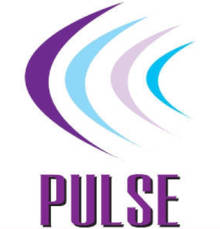
More Breakthrough Thinking . . .
Integrated Marketing is a Philosophy - How to Engage in a Donor-Focused Model
Think about the successful relationships you have with friends, family and favorite organizations
— the communication you share within these relationships — the many ways you can “get together.”
Some relationships you have are limited to an exchange of holiday cards once a year. With others you occasionally swap emails back and forth or you speak on the phone at the same time you are IMing each other to book a group vacation online (after you’ve received a postcard in the mail announcing a great deal.)
NOT every relationship results in a “best friend” status.
The most successful relationships between organizations and individual supporters and/or prospects are the relationships that are mutually beneficial and seamless — relationships where the organization is in a sense almost invisible. The connection is truly felt between the donor and the people or mission the organization serves and the organization itself is simply viewed as a conduit of change and hope.
In talking about media it is NOT a single event (an attractive mailing, for example) that propels the relationship further. It is the continued and appropriate use of many forms and methods of communication, i.e. mail, phone, email, online, print, TV, radio, text messaging that can help open doors and build new relationships.
Organizations need to realize that, today, no single methodology works for all donors. There are no donor files of people who all want to be your “best friend.” But if you are consistent in message, in brand and in service, across all practicable media and platforms, you (and your mission) will have the best chance of becoming more understood and more beloved as a mission worthy of generous support. That’s where the donor-focused and relationship-centric philosophy and strategies available through PULSE Marketing, Development & Communications can help.
It is not enough to simply pick a direct mail package and approve a list plan. There are many ways to improve retention that keep more donors/members on file. But what good is improving renewals without understanding and controlling the sources of new donor/member acquisition or increasing lapsed renewals? Why did they lapse in the first place? Organizations should be able to connect the dots between original source, multiple vs. upgrade renewals, preference for online vs. telemarketing, how to get second gifts from “transactional” vs. “invested” donors/members, and so on.
Taken separately, each of these questions and individual areas of your fundraising program is important, and you can improve one marketing component at a time. But, when managed, analyzed, and organized as a donor-focused, relationship-centric integrated direct response fundraising program you truly have an opportunity to open doors and build new relationships with your donors. Contact us a PULSE-MDC to learn more today!
The government is talking $TRILLIONs . . . what does today’s economic reality mean for your direct mail plans?
However, if it were just cyclical, nobody would be talking about $TRILLION in relief dollars to stabilize the current economic reality.
All that being said, direct mail at this time is challenging and has been for a number of months, for both acquisition and renewal – what are the alternatives?
Donors are lapsing faster than ever, so we all need new donors -- if we don't do acquisition, it may save us some expense money today, but hurts big-time in the long-run.
You could also say that if other organizations are cutting back on acquisition there remains an opening -- an opportunity -- for those who will proceed with more aggressive plans.
To make a long story short (too late, I know) another possible silver lining to the current situation on certain organizations may be the fact that if individuals that are able to join or donate to your cause/appeal now, maybe better positioned for longer-term performance, since they ostensibly may have the need to make a more "thought-out" to give and were less impulsive with their giving and may stick around longer.
Wash, Rinse, Repeat….
-
Regular and ongoing reevaluation of all aspects of your program be it, copy, design, timing, list selection, house file segmentation, etc. must be at the core of internal processes or collaborative processes with your agency partners.
-
Annual or bi-annual file and creative audits as well ongoing results analysis must be integral part of operations to move programs to their “next level."
-
We all get bogged-down in day-to-day tasks and proofs, moving copy through endless editorial review processes, etc….SO, its easy just to push things through.
-
PAUSE – take a breath (make some time for just thinking). Have a “McDonald’s or Starbucks moment” – great ideas come in strange places. The grind is NOT kind to creative/analytical thinking.
-
By periodically “off-site-ing” and looking at ALL the mail pieces sent to donors over the course of the year (along with the results), you will be amazed at the things that went by. These regular creative audits allow you and your team and agency partners to take the time (don’t rush it) to see if all the strategies you started the year with were correctly executed and if the performed as expected. What tests were winners and what tests were embarrassing?
-
Remember you are not writing for you, your President or Chair of the Board. Clarity and simplicity are key. Would your mother or grandmother be able to read, understand and more importantly take clear action based on your letter?
-
Examine graphics, look at fonts (styles/sizes), copy letter length, premium vs. non-premium mix, etc.
Why do you ask…?
The future of direct response fundraising cannot be driven around the all-too-common concept of . . . its October or April, its time for a mailing or we need to do the “filling in the blank” mailing again “just like last year.” Successful programs are mindful of the “why” and the “who” and the intended “engagement for impact” before the copywriter “puts pen to paper.”
- You don’t NEED money
- You are offering an opportunity to change the world
- You can join with others to end/fix/solve ______________
- Nobody really cares that it is the end of your fiscal year
- Real reasons
- Mini-Campaigns offer a chance to be part of something important
It’s not all about me…
Organizations and their communications messaging must be compelling and engaging and above all must be flexible and “donor-focused” in approach to meet individuals where they are and not force individuals to meet the organization where it is. Multiple tracks of touch-points and communications strategies must be implemented to maximize donor-engagement with the mission and its outcomes.
-
Being “donor-focused” removes institutional thinking from the donor relationship-enhancing communication. Your organization simply becomes a conduit – a facilitator – for what the donor or prospect already wanted to do. You just gave them an opportunity to make it happen.
-
In most cases, your organization faces competition with other NPOs within your mission circles, let alone other categories. Your communications MUST demonstrate your organization's “worthiness of support” and “best in class-ness” well beyond, “we’ve been doing xxx for over xxx years.”
-
Letters that use huge numbers exclusively to show how great a task you have to undertake do so at their own peril. Avoid the danger of the “drop in the ocean” scenario. I read a recent quote as an excellent example -- it suggested that rather than asking for a gift of $25 to combat global warming, make sure that your language enables donors gifts to be meaningful. Why not make that $25 gift help fund a particular study or help mobilize grass-roots efforts, etc. Tying gifts to results is an absolute necessity.
-
Thank you, thank you, thank you, AND THANK YOU!
-
Make the most of donor newsletters. Don’t send an institutional piece that is already being printed by your communications or PR team and send it to donors. Donor desires for results demand a specific donor stewardship publication that serves as yet another thank you for their support. It is a report back to donors on results (results that are possible thanks to donor gifts). It engages donors in your successes. The most effective newsletters (that improve donor-engagement and increase income) are usually short, timely, and NOT glossy magazines.
-
Communication style must feel as if you know your donors. Remember, you are writing to ONE person at a time – NOT hundreds of thousands or more.
-
Use data you have in your database to truly personalize your appeals far beyond “Dear Ms. Sally Samplename,”
It’s integrated…
“Direct Mail” is NOT direct mail – it IS part of an integrated direct response program that includes mail, phone, online, email, space, broadcast, txt, online communities et al and in order to maximize an organization's reach use of all practicable media is necessary.
-
Coordinating message and delivering consistency of brand across all channels instills a higher sense of professionalism and seriousness to your donor and prospect constituencies.
-
Don’t worry about online or other channel outreach cannibalizing your mail efforts. The end result is far more important – more dollars, more donors, and better-engaged constituents.
-
In the age of online communities/email/text messaging, don’t forget the power of telemarketing, national and regional space ads (including online), and broadcast media.
-
Consider using today’s voice messaging tools to significantly boost direct response outreach results and participation rates.
-
Use media intelligently – some messages work better than others for certain efforts and channels. When using multiple channels in an integrated outreach effort, be sure that the message rings true and is authentic in demonstrating the impact of your mission.
Direct Response is NOT a necessary evil or ugly stepchild
Direct response is NOT the ugly stepchild of a major giving, planned gift, events, foundations/corporate giving programs or a necessary evil, but part of a comprehensive program that in order to work well, all areas must work together to breakdown the walls (real or imagined) an avoid the silo mentality of “my donor not yours.”
-
If done properly the direct response/annual fund segment of the donor file serves as a feeder for higher levels of cultivation such as major gifts, planned gifts, volunteer leadership, and events. Often unjustly dismissed, lower donor repeat givers are fantastic planned giving prospects.
-
Many organizations need more than a few major donors and foundations to keep operating and effect impactful change – direct response can serve as the operational backbone of funding for many organizations.
-
The annual fund/direct response team should be “at the table” with MG/PG/Events people who are typically “one-to-one” relationship-oriented and don’t necessarily have the marketing background the DMers do and the two orientations can work well together.
-
Consider teaming with MG/PG departments to provide ALL direct response support for their operations – it educates your DR team as to what else is going on within development and it may also make it possible for you to keep charge of all fundraising mail calendars to ensure unity of messaging.
3:14 pm est

